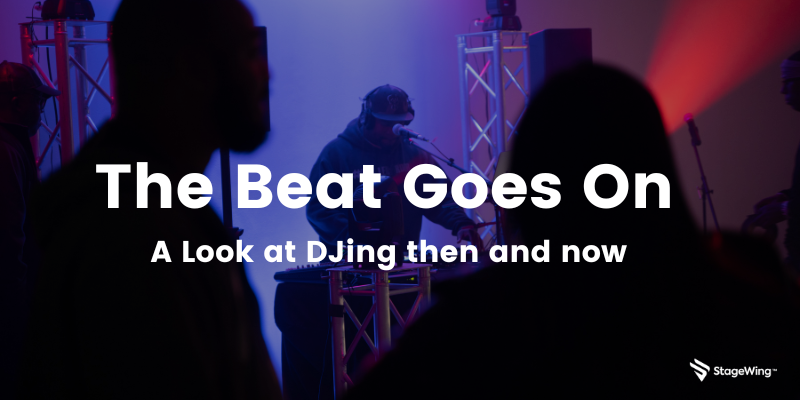19
JunThe Beat Goes On: A Look at DJing then and now

How DJing began
In the early 1970s, a new musical phenomenon was born in the Bronx, New York. It was called DJing, and it involved playing records on two turntables and a mixer to create a continuous beat that kept people dancing all night long. The first DJs in the Bronx were pioneers of this new art form, experimenting with different techniques and styles to create something entirely new.
One of the most famous of these early DJs was Kool Herc, who is widely credited with inventing the breakbeat. Herc would take two copies of the same record and play the drum break over and over again, creating a loop that dancers could groove to. Other early DJs included Grandmaster Flash, Afrika Bambaataa, and DJ Hollywood, each of whom brought their own unique style to the mix.
The Birth of Turntablism, through Hip Hop
In the early 1970s, a new form of music emerged in the Bronx called Hip Hop. It was a cultural movement that included rapping, graffiti art, breakdancing and DJing. DJs played a crucial role in this new genre by using their turntables to create beats and rhythms.
One of the pioneers of this new style of DJing was Grandmaster Flash. He developed new techniques like backspinning and cutting, which allowed him to loop and manipulate records in ways never seen before.
As Hip Hop grew in popularity, so did the art of DJing. Soon, DJs were not just playing music, but they were also creating it. They became the superstars and backbone of the Hip Hop movement, and their influence can still be heard in music today, like DJ Jazzy Jeff.
The Rise of House Music
In the 1980s, a new form of dance music emerged in Chicago called House. DJs like Frankie Knuckles and Ron Hardy played a mix of disco, funk, and soul records at clubs like The Warehouse and The Music Box.
House music quickly spread to other cities and countries, and DJs began to experiment with new sounds and techniques. They used drum machines, synthesizers, and samplers to create their own unique tracks.
Today, House music is still a popular genre, and DJs continue to push the boundaries with their creativity and innovation.
The Evolution of Techno
In the 1980s, a new form of electronic dance music emerged in Detroit called Techno. DJs like Juan Atkins, Derrick May, and Kevin Saunderson used synthesizers and drum machines to create futuristic sounds that were unlike anything heard before.
Techno quickly spread to other countries, and DJs began to incorporate new elements like breakbeats, acid house, and industrial music into their sets. The genre continued to evolve and branch off into sub-genres like Minimal Techno and Detroit Techno.
Today, Techno is still a popular genre, and DJs continue to experiment with new sounds and techniques to keep the music fresh and exciting.
The Golden Age of Hip Hop
In the late 1980s and early 1990s, Hip Hop experienced a golden age. Artists like RunDMC, Public Enemy, Salt-N-Pepa, N.W.A., and became household names, and DJs played a crucial role in their success.
DJs like DJ Premier, Pete Rock, and J Dilla created iconic beats that are still sampled today. They used techniques like chopping and layering to create complex rhythms that were both catchy and innovative.
Hip Hop continues to be a dominant genre in music, and DJs continue to play a crucial role in its evolution and success.
The Digital Revolution
In the early 2000s, DJing underwent a digital revolution. DJs began to use software like Serato and Traktor to control their music using laptops and controllers.
This new technology allowed for more creativity and flexibility in DJ sets. DJs could now seamlessly mix tracks from different genres and create mashups on the fly.
Today, DJing has become more accessible than ever before, with anyone able to download software and start mixing tracks. However, the art of DJing still requires skill and creativity to stand out in a crowded field.
The Future of DJing
As technology continues to evolve, so does the art of DJing. DJs are now using virtual reality and augmented reality to create immersive experiences for their audiences.
New software and hardware are being developed that allow for even more creative control over music. DJs are also collaborating with artists from different disciplines like visual art and dance to create multimedia performances.
The future of DJing is exciting and unpredictable, but one thing is for sure: the art form will continue to evolve and push boundaries in ways we can't even imagine yet.


